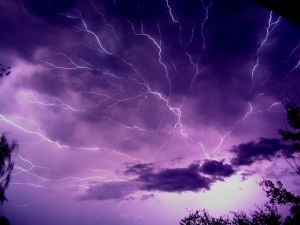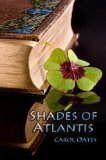Hannah Fielding's Blog, page 151
July 31, 2012
Love at first sight?
Do you believe in love at first sight? If you do, you’re in good company: a recent survey (http://www.femalefirst.co.uk/relationships/love-250110.html) found that 65 per cent of British men and 45 per cent of British women believe in love at first sight. Why the difference? I suspect it is because men are more attracted to women’s looks, initially, while women take more time to get a feel for character.
When I write romance stories, I love writing the first meeting of the characters, because so much hinges on those first moments. In Burning Embers, heroine Coral meets the man she is destined to love, Rafe, in the very first chapter. Here, aboard a ship bound for Mombasa, Kenya, the characters are in a sheltered, magical world, away from the pressures and norms of society. In the moonlight, they form a connection, offering a glimpse into the deepest reaches of their hearts.
Coral was overcome by emotion, remembering the last time she had seen this landscape. She thought of her father, who today would not be waiting for her. How empty her childhood home would seem without him. A lump formed in her throat, and she bit her lower lip while fighting to control the tears quivering on the edge of her eyelashes. Unable to restrain them for long, they spilled over and down her cheeks. She had forgotten her companion’s presence while engrossed in her sadness, so she gave a faint start when he spoke.
“Please don’t…” he whispered softly.
She did not answer; she did not even move. She simply stood there, limp and weary, tears continuing to mar her lovely features. He brushed her chin lightly with the tip of his forefinger and gently turned her drawn face toward him. With a white handkerchief he produced from his pocket, he carefully wiped away her tears.
“An African proverb says that sorrow is like rice in the pantry: it diminishes day by day.” Despite his solemn tone, he looked at her with laughing eyes that the morning light had turned golden brown but remained almost as hypnotic as they had been in the moonlight.
“Forgive me,” Coral murmured, smiling through her tears. “I didn’t intend to make a spectacle of myself. It was rather childish, I suppose.”
He gave a vague motion of his head and winked at her. “Even big boys cry sometimes, you know.” There was a slightly hard edge to his words, and once again she caught herself thinking how appealing she found his husky voice.
Love at first sight? I’m not sure life is so straightforward; for love is a choice, a verb, an action, not something that happens to us passively. But I do believe that in the first meeting there can be a connecting of souls, an epiphany deep within that foretells of future happiness should we be courageous enough to allow the love to develop – to strip away our barriers, to give ourselves completely.
The French translation of love at first sight is coup de foudre, which literally means bolt of lightning. It’s a wonderful description of that amazing feeling you get when you first set eyes on your love – a flash, electrifying and dramatic, that forever changes you. But I think, perhaps, I prefer the phrase ‘fall in love’, for it conveys that sense of relaxing into the feeling, of floating dreamily or letting go – of allowing the coupe de foudre you felt to change you. And after the shock of the coupe de foudre and the disorientation of the fall into love, that’s when you reach that place called happy-ever-after, ‘that calm and settled place’ of Edward Monkton’s poem:
In that still and settled place
There’s nobody but you
You’re where I breath my oxygen
You’re where I see my view
And when the world feels full of noise
My heart knows what to do
It finds that still and settled place
And dances there with you.
July 30, 2012
New review of Burning Embers in Kent newspapers
The following review appeared in the What’s On supplement this weekend across Kent newspapers:
This debut novel from the Egyptian writer who made Kent her home is set on the plantations of 1970s Kenya, where a mysterious love affair grips a young beautiful photographer. Coral Sinclair returns to her family plot to claim her inheritance when her estranged father dies but her homecoming is disrupted when she encounters the mysterious but fearsomely attractive Rafe de Montfort. The owner of the neighbouring plantation, he is a reputed womaniser who had an affair with her stepmother, but that does not stop Coral being struck by a bewitching attraction to Rafe. When she delves into his past, a worrying truth makes her question Rafe’s motives and she is caught between her friends’ warnings and her own instincts. A destructive, historical romance laced with greed, revenge, betrayal and love.
The most romantic season
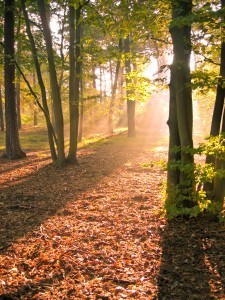 I recently ran a question survey via SurveyMonkey and Goodreads to discover people’s ‘most romantics’. For the ‘Most romantic season’ question, the clear favourite was autumn (43%), followed by spring (31%), and then summer (15%) and winter (11%).
I recently ran a question survey via SurveyMonkey and Goodreads to discover people’s ‘most romantics’. For the ‘Most romantic season’ question, the clear favourite was autumn (43%), followed by spring (31%), and then summer (15%) and winter (11%).
Given the current season and the glorious weather that many of us are enjoying, I was surprised to see summer so far down the list. Perhaps we prefer the optimism and freshness of spring to the temperature extremes of summer and winter. But autumn stands as the clear winner. I wonder why?
My theory is that the season appeals so to the senses. When I close my eyes and conjure an image of a romantic moment in autumn, I at once find myself walking through the grounds of my home in Kent. I admire the wonderful colours of the turning leaves – glorious reds and ambers and yellows amid the verdant evergreens. I breathe in the scent of dewy grass and wet earth. I crunch through piles of leaves, and laugh as my dog plays in the piles. I pick apples from branches bowing under the weight of their ripe fruits, and bite into the delicious, sweet flesh.
Of course, autumn has long inspired poets, who more eloquently encapsulate the romantic essence of the season than can I. Today I share with you two poems beating the same title by the Romantic poets William Blake (1783) and John Keats (1820).
To Autumn, by William Blake
O Autumn, laden with fruit, and stain’d
With the blood of the grape, pass not, but sit
Beneath my shady roof; there thou may’st rest,
And tune thy jolly voice to my fresh pipe,
And all the daughters of the year shall dance!
Sing now the lusty song of fruits and flowers.
“The narrow bud opens her beauties to
The sun, and love runs in her thrilling veins;
Blossoms hang round the brows of Morning, and
Flourish down the bright cheek of modest Eve,
Till clust’ring Summer breaks forth into singing,
And feather’d clouds strew flowers round her head.
“The spirits of the air live in the smells
Of fruit; and Joy, with pinions light, roves round
The gardens, or sits singing in the trees.”
Thus sang the jolly Autumn as he sat,
Then rose, girded himself, and o’er the bleak
Hills fled from our sight; but left his golden load.
To Autumn, by John Keats
Season of mists and mellow fruitfulness,
Close bosom-friend of the maturing sun;
Conspiring with him how to load and bless
With fruit the vines that round the thatch-eves run;
To bend with apples the moss’d cottage-trees,
And fill all fruit with ripeness to the core;
To swell the gourd, and plump the hazel shells
With a sweet kernel; to set budding more,
And still more, later flowers for the bees,
Until they think warm days will never cease,
For Summer has o’er-brimm’d their clammy cells.
Who hath not seen thee oft amid thy store?
Sometimes whoever seeks abroad may find
Thee sitting careless on a granary floor,
Thy hair soft-lifted by the winnowing wind;
Or on a half-reap’d furrow sound asleep,
Drows’d with the fume of poppies, while thy hook
Spares the next swath and all its twined flowers:
And sometimes like a gleaner thou dost keep
Steady thy laden head across a brook;
Or by a cyder-press, with patient look,
Thou watchest the last oozings hours by hours.
Where are the songs of Spring? Ay, where are they?
Think not of them, thou hast thy music too,—
While barred clouds bloom the soft-dying day,
And touch the stubble-plains with rosy hue;
Then in a wailful choir the small gnats mourn
Among the river sallows, borne aloft
Or sinking as the light wind lives or dies;
And full-grown lambs loud bleat from hilly bourn;
Hedge-crickets sing; and now with treble soft
The red-breast whistles from a garden-croft;
And gathering swallows twitter in the skies.
July 28, 2012
Kenyan recipe: Chapati
 You may associate the flatbread chapati with India, but in fact it is a staple in Kenya. There, the flatbread is made by hand and used as both meal accompaniment and utensil for eating, as people scoop up their vegetable and meat dishes with the chapati.
You may associate the flatbread chapati with India, but in fact it is a staple in Kenya. There, the flatbread is made by hand and used as both meal accompaniment and utensil for eating, as people scoop up their vegetable and meat dishes with the chapati.
In Burning Embers, set in Kenya, Coral eats chapatis with her breakfast, but chapatis are a wonderfully versatile food that can be eaten with any meal. You can serve them with main meals, use them as wraps with sandwich fillings, or a sprinkle with a little cinnamon and sugar for a sweet treat. They are easy to make at home with few (and inexpensive) ingredients, and you have the fun of getting stuck in with your hands, which I always enjoy!
Ingredients
2 cups flour (all white, or half and half white and wheat)
1/2 teaspoon salt
Cooking oil
Warm water
1. Sift the flour and salt together and mix well.
2. Add 1 tablespoon of oil and mix with your hands.
3. When well-combined, add water, drop by drop, until you have an elastic dough.
4. Knead on a cool surface.
5. Cover the bowl with a tea towel and leave the dough to rest for between 30 minutes and 8 hours – whatever is convenient for you.
6. Split the dough into four, and roll each out into a circle – I usually take them to the size of a dinner plate.
7. Heat a frying pan containing a little oil.
8. Once the pan is very hot, add a chapati. Fry until bubbled up and golden brown on each side.
9. Keep warm in an oven on a low heat until ready to serve. You can reheat pre-prepared ones by popping them in a frying pan for a minute; they then soften as if just cooked.
July 27, 2012
Book review: A Weekend with Mr Darcy by Victoria Connelly
A book title containing the word ‘Darcy’ is certainly going to catch my attention, Pride and Prejudice being one of my favourite classic romance novels. Hence I decided to give this novel a try, and I was pleased I did because it was a fun, diverting, romantic read.
The action of the story centres around a Jane Austen weekend held at Purley Hall, Hampshire, at which Austen experts and fans alike come together to discuss the writer and her works. Love blooms at the event for two women; and without wanting to give anything away and spoil the plot for the reader, plenty of twists and turns lead to a satisfying ending.
What stood out for me in this book was its successful narration of not one, but two romantic stories. Usually books have a main plot, following a woman and a man, and then perhaps one or two subplots, with other romances having much less impact on the tale. But in this book the subplot that follows a second couple is all but equal to the main plot. Because the two plots follow different women and the different men with whom they fall in love, there was plenty of interesting material to keep me turning the pages.
The best element of the book, for me, was the Austen-related content. Connelly has researched her subject superbly, and as a result I found the Austen details really interesting. In fact, by the end of the book I was sorely tempted to log on to the internet and search ‘Jane Austen weekend’, so fun did the experience seem!
I also really enjoyed the connection to romance writing in the book, which of course appeals to me given my own writing. There’s an interesting discussion raised in the book about how modern-day romance writing such as my own compares to that of authors like Austen; and why it is that some people scoff at the passionate, evocative books that so many women (and men – read the book!) love.
In short, a great summer read – easy to gobble down in one or two sittings out in the garden in the sunshine. I guarantee it will have you reaching for your Austen novels afterwards and dreaming of Darcy.
A Weekend with Mr Darcy is available now from Amazon; click on the book cover below to visit the store.
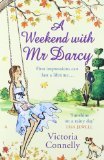

July 26, 2012
Eroticising classic romances of English literature
If you’ve been following book news in the past week you’ll have read about erotic romance ebook publisher Total-E-Bound’s new initiative: giving classic romance novels an ‘erotic makeover’. Inspired by the success of the Fifty Shades series, the publisher has decided to add some spice to several classic titles. The books, which are beloved of women worldwide – Pride and Prejudice, Jane Eyre, Wuthering Heights, Northanger Abbey – are being released with additional erotic scenes penned by romance authors. According to the Independent:
Some original fans of Jane Eyre might be unhappy to discover that the female protagonist has “explosive sex with Mr Rochester” in the publisher’s erotic edition. In Wuthering Heights, heroine Catherine Earnshaw “enjoys bondage sessions” with Heathcliff.
Of course, under UK law, these classic English works are outside of the period of copyright restriction, which means anyone can publish – and play with – the words.
Those reacting to the news fall into two, diametrically opposed, camps: those who enjoy creative exploration, and those who believe touching such timeless novels is sacrilegious. I have to confess, I’m with the latter camp. Novels like Pride and Prejudice, Jane Eyre and Wuthering Heights have been my firm favourites since my teenage years, and I think much of their charm comes from their innocence, from the lack of eroticism. The writing leaves much to the imagination, and I see nothing wrong with that. We respect the era in which these women were writing, the societal norms they had to follow, the constraints they faced compared to how we may write today. Were the original authors able to see their works added to in this way, I think they would be shocked. For how much did the Brontë sisters and Jane Austen know of sensuality and sex? Of the three, only one married.
The question, I think, comes down to one of respect for a work of art. Such is the popularity of these classic English novels that I don’t think it is a stretch to class them as art. Would we re-sculpt Michelangelo’s David to modernise his hairstyle? Or add a section to a Beethoven symphony to make it more in keeping with modern-day rap or rock or pop music?
What do you think? I’d be interested to hear your views on the subject.
July 24, 2012
Shopping among the ghosts of smugglers
The conservation area of a local town, Deal, in Kent, which used to be a smugglers’ haunt in the eighteenth and nineteenth centuries. 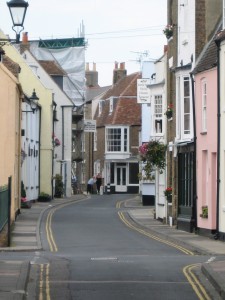
July 23, 2012
The most romantic film is… Titanic
I recently ran a question survey via SurveyMonkey and Goodreads to discover people’s ‘most romantics’. For the ‘Most romantic film’ question I offered a choice of the following (plus respondents could note down a different film if preferred):
An Affair to Remember
Titanic
Dirty Dancing
Gone with the Wind
Casablanca
The Notebook
City of Angels
Twilight
The clear favourite across the survey platforms, with 40% of the votes (all female), was Titanic, followed by Gone with the Wind.
I confess I was rather surprised by the result. I had expected a classic romance to top the list. But given the sheer magnitude of the Titanic spectacle, and its tragedy, I see why it has affected so many people.
Personally, I struggle to watch Titanic because I can’t bear sad endings. Indeed, I recently started a thread in the Goodreads Happily Ever After Cafe group entitled ‘Titanic: Is it me or is the ending unbearable?’ that sparked quite a discussion, with plenty of other romantics admitting they love the film but hate the ending. They too found themselves wanting to shout, ‘Don’t give up climbing onto that floating door, Jack!’ I think perhaps although we all went to see it at the cinema prepared for tragedy (imagine if James Cameron hadn’t sunk the ship!), but knowing that it was a love story, we hoped for a happy ending for those characters at least. I suppose they get their happy ending in the afterlife, but it’s not quite enough for a romantic like me.
Still, there is so much in the film that is wonderfully romantic. The beautiful costumes, the breathtaking special effects and scenery, the class divide, the drama, the passion, the heroics, the bravery, the chemistry between Leonardo DiCaprio and Kate Winslet, the seminal ‘King of the world’ scene at the bow of the ship. And all underpinned by Celine Dion’s haunting song ‘My Heart Will Go On’, which became an international sensation and is to date the tenth bestselling single of all time, with sales totalling 15 million.
For me, what makes Titanic so special is the intensity of the narrative – the lovers meet, fall in love and are separated in so short a span of time. Jack’s words, spoken early on in the film, echo throughout the disaster that unfolds:
Well, yes, ma’am, I do… I mean, I got everything I need right here with me. I got air in my lungs, a few blank sheets of paper. I mean, I love waking up in the morning not knowing what’s gonna happen or, who I’m gonna meet, where I’m gonna wind up. Just the other night I was sleeping under a bridge and now here I am on the grandest ship in the world having champagne with you fine people. I figure life’s a gift and I don’t intend on wasting it. You don’t know what hand you’re gonna get dealt next. You learn to take life as it comes at you… to make each day count.
Tragically, news reports emerging after the film’s release and at the time of the one hundredth anniversary of the ship’s sinking indicate that Jack and Rose’s story is not pure fiction. For an example of a real-life romance that unfolded on the doomed vessel, see this article in the Telegraph. It’s stories such as these, I’m afraid, that make it just too difficult to re-watch Titanic; because I can never escape into the fictional world as I’d like to, knowing as I do how much truth the film incorporates.
What do you think? Is Titanic your favourite romantic film? If so, why do you love it? If not, which film do you prefer?
July 21, 2012
Favourite poem: Les éléphants
I think one would find it hard to find a person on the planet who does not love elephants. The French poet Paul Éluard – one of the founders of the surrealist movement – said ‘Elephants are contagious’, and I think he was right. Their size, their beauty, their slow, calm pace. There’s such a sense of wisdom in an elephant; you can imagine them looking down at us tiny humans, rushing about, bossing them about, and knowing better than us. And have you seen the movie Water for Elephants? There’s such a sense of magic and romance around the mighty creatures.
Being one of the majestic wild creatures that is native to Kenya, of course I wove elephants into my novel Burning Embers. Rafe takes Coral on a hot-air balloon trip high above the plains, affording her the opportunity to take photographs for an article she is writing on Africa. From the novel:
The balloon was still rising, its direction fixed by the whim of the wind. The air was crisp, a whispering light breeze hitting them in the face as the aircraft ascended. The passengers watched silently as the thrilling spectacle of nature’s daily life unfolded. They caught sight of a herd of elephants rushing toward a lake in the distance: massive, magnificent animals led by the female, their large ears flapping in the morning air.
I have mentioned before that one of the great sources of inspiration for me in writing Burning Embers was the poetry of flamboyant nineteenth-century Frenchman Leconte de Lisle; and I especially love his poem ‘Les éléphants’, which I think beautifully conveys the idea of the elephant’s calm, measured, ancient wisdom. My friend John Harding has translated the poem into English; but as usual I include the French as well, because there is such beauty in the sound of words. Take a moment to read the original poem aloud, and you will see what I mean.
The Elephants
The red sand is like an endless sea,
Blazing, wordless, slumped in its bed.
Unmoving waves stretch along
The horizon with its coppery fumes, man’s dwelling.
No life nor sound. All the fed lions
Are sleeping deep in their dens a hundred leagues hence,
And the giraffe drinks from the blue springs,
Yonder, beneath the date-palms which the panthers know.
No bird goes by, beating with its wing
The dense air through which an immense sun goes round.
At times some boa, warmed in its sleep,
Ripples its back with glittering scales.
Likewise the kindled expanse burns beneath the unclouded heavens.
But, whilst everything slumbers in the cheerless emptiness,
The rugged elephants, those slow and clumsy travellers,
Cross the deserts to the country of their birth.
From a spot on the horizon, like brown lumps,
They come, throwing up the dust, and one can see that,
So as not to stray from the straightest path,
They make the distant dunes slip down under their broad and firm feet.
He who leads the way is an old chieftain. His body
Is covered with cracks like a tree-trunk gnawed and consumed by the weather.
His head is like rock, and the curve of his spine
Arches powerfully with his slightest effort.
Never slowing and not halting his march,
He guides his dusty companions to the certain goal;
And, leaving a ploughed sandy furrow behind them,
The enormous pilgrims follow their patriarch.
With ears spread like fans, their trunks between their teeth,
They make their way with eyes closed. Their bellies throb and steam,
And their sweat rises in the flaming air like a mist;
And a thousand glowing insects hum all around.
What do they care for thirst and the consuming fly,
And the sun baking their black and wrinkled skin?
They march on dreaming of the forsaken land,
Of the forests of sycamore-figs where their breed sheltered.
They will see again the river broken forth from the great heights,
Where the huge hippopotamus swims along bellowing,
Where, turned white by the moonlight and casting forward their shadows,
They would crush the reeds going down to drink.
Also, full of courage and deliberation, they pass on
Like a black line, in the endless sands;
And the desert resumes its stillness,
As the ponderous travellers fade on the horizon.
Les éléphants
Le sable rouge est comme une mer sans limite,
Et qui flambe, muette, affaissée en son lit.
Une ondulation immobile remplit
L’horizon aux vapeurs de cuivre où l’homme habite.
Nulle vie et nul bruit. Tous les lions repus
Dorment au fond de l’antre éloigné de cent lieues,
Et la girafe boit dans les fontaines bleues,
Là-bas, sous les dattiers des panthères connus.
Pas un oiseau ne passe en fouettant de son aile
L’air épais, où circule un immense soleil.
Parfois quelque boa, chauffé dans son sommeil,
Fait onduler son dos dont l’écaille étincelle.
Tel l’espace enflammé brûle sous les cieux clairs.
Mais, tandis que tout dort aux mornes solitudes,
Lés éléphants rugueux, voyageurs lents et rudes
Vont au pays natal à travers les déserts.
D’un point de l’horizon, comme des masses brunes,
Ils viennent, soulevant la poussière, et l’on voit,
Pour ne point dévier du chemin le plus droit,
Sous leur pied large et sûr crouler au loin les dunes.
Celui qui tient la tête est un vieux chef. Son corps
Est gercé comme un tronc que le temps ronge et mine
Sa tête est comme un roc, et l’arc de son échine
Se voûte puissamment à ses moindres efforts.
Sans ralentir jamais et sans hâter sa marche,
Il guide au but certain ses compagnons poudreux;
Et, creusant par derrière un sillon sablonneux,
Les pèlerins massifs suivent leur patriarche.
L’oreille en éventail, la trompe entre les dents,
Ils cheminent, l’oeil clos. Leur ventre bat et fume,
Et leur sueur dans l’air embrasé monte en brume;
Et bourdonnent autour mille insectes ardents.
Mais qu’importent la soif et la mouche vorace,
Et le soleil cuisant leur dos noir et plissé?
Ils rêvent en marchant du pays délaissé,
Des forêts de figuiers où s’abrita leur race.
Ils reverront le fleuve échappé des grands monts,
Où nage en mugissant l’hippopotame énorme,
Où, blanchis par la Lune et projetant leur forme,
Ils descendaient pour boire en écrasant les joncs.
Aussi, pleins de courage et de lenteur, ils passent
Comme une ligne noire, au sable illimité;
Et le désert reprend son immobilité
Quand les lourds voyageurs à l’horizon s’effacent.
July 20, 2012
Book review: Shades of Atlantis by Carol Oates
I really enjoy fiction that weaves itself into history or mythology, especially when it links to places I have visited, or would like to visit. So I was keen to read this book, Shades of Atlantis by Carol Oates, which ties into the mystical Hill of Tara – the seat of the High Kings of Ireland and one of Ireland’s most famous ancient sites. This book has many fascinating elements – Celtic mythology, King Arthur and Merlin, Plato, and the lost city of Atlantis – all drawn together in a love story of soul-mates and their action-packed destiny.
The heroine, Triona, lives in Camden, Maine, with her aunt, uncle and brother, Ben. She has never quite felt like she ‘fit in’ and she dreams of travelling to Europe after completing her senior year at high school. Triona is working part-time in a local restaurant to help fund her travels, and when she meets her new boss the attraction between them is instant.
‘I couldn’t explain it; though I’d never laid eyes on Caleb Wallace before, I recognized him instantly. I knew the contours of his face, the straight line of his jaw, the shallow dimple in his chin, the deep blue eyes that sparkled like sapphires…’
‘I didn’t want to move an inch. Being with Caleb right there was like one of the fairytales I’d never believed in, my very own happy ending.’
When tragedy strikes, Triona eventually follows her dream and goes to London. Here she learns the meaning of many of the stories Caleb had told her and she begins to understand his fascination with mythology. But when legend becomes Triona’s reality, and her soul-mate and family are in danger, can Triona live up to her destiny?
‘There have always been mysteries, since the dawn of time… Things that no human has been able to explain.’
I love this book. The mysterious Caleb is a great character – handsome, strong, elusive and passionate, and it was really nice to also see the female lead character, Triona, develop from a somewhat insecure schoolgirl into a strong, fiery, independent woman, guided by Caleb’s love and knowledge. I love the way that this book brings Celtic myth and legend into a contemporary romance, and puts forward the idea that these ‘stories’ are not yet complete, and are part of our living future. I am sure that having read this book many people will want to visit the beautiful Hill of Tara, to get lost in its ancient history, and touch the Stone of Destiny for themselves.
The plot has some great surprises as well; I was caught out several times on what I thought was going to happen. It’s very difficult to give you too much more on the plot of this book without giving the surprises away. But if you like the romance and thrill of magic, mythology and legend, all tied up with contemporary fiction… if like me you find the idea of soul-mates and destiny irresistible, then you will love this book.
It was an adventure that left me wanting to read more, to see what happened to the characters next. Luckily, Carol Oates has hinted in interviews of a sequel coming very soon – which may even be written from a different character’s point of view. I shall certainly be adding her future books to my bookshelf.
Shades of Atlantis is available now from Amazon; click on the book cover below to visit the store.

